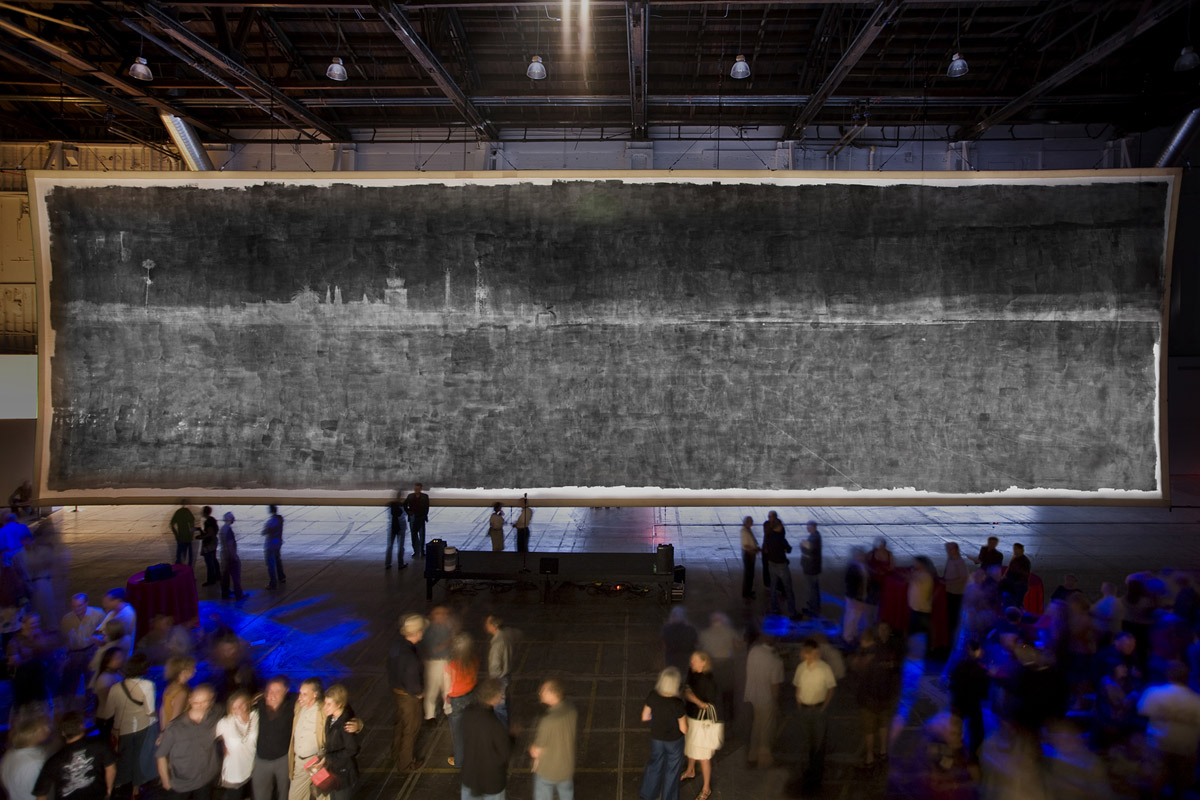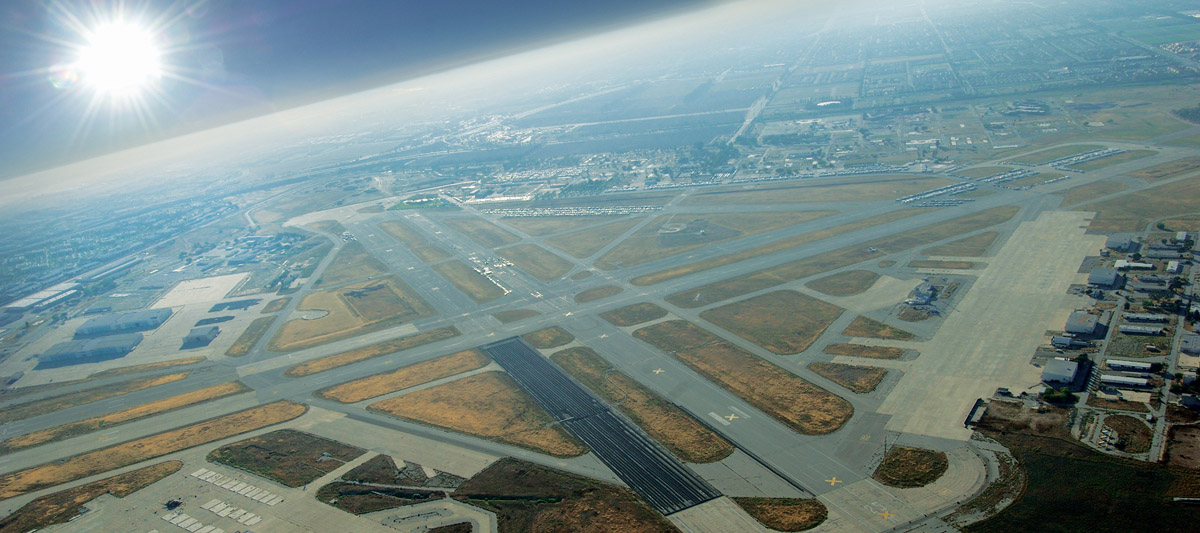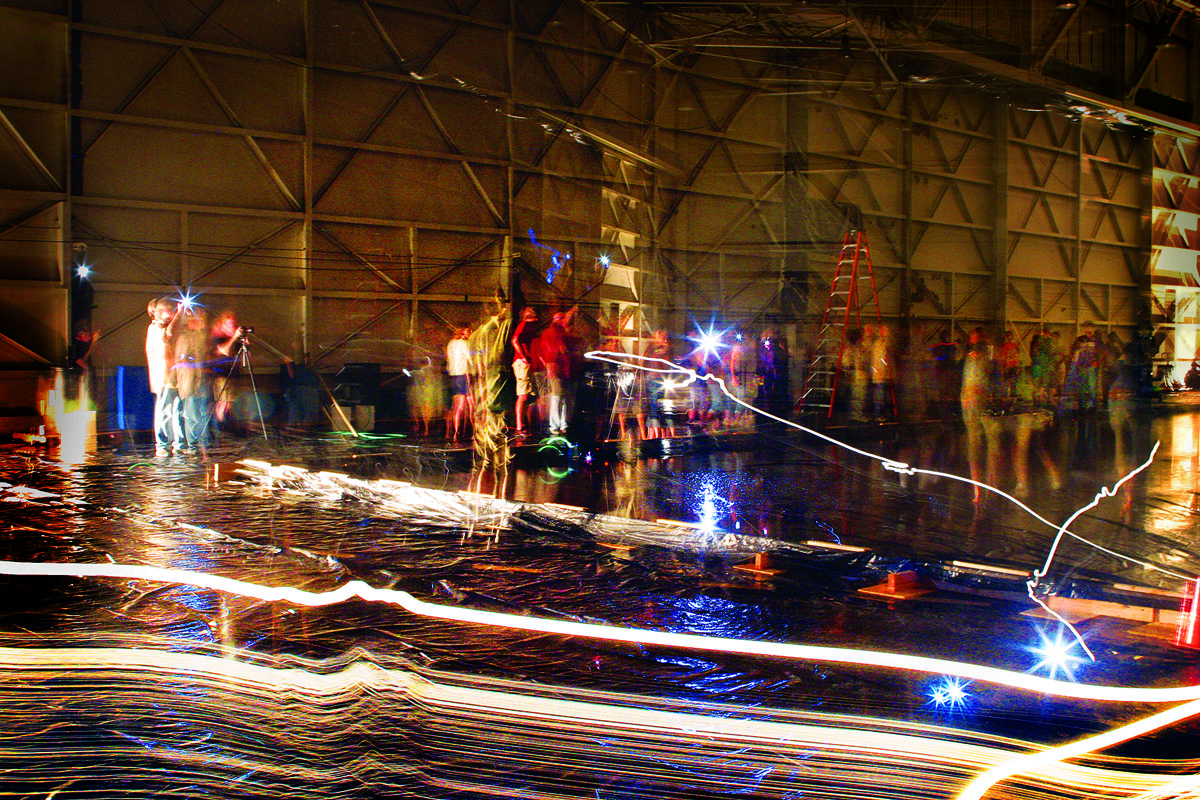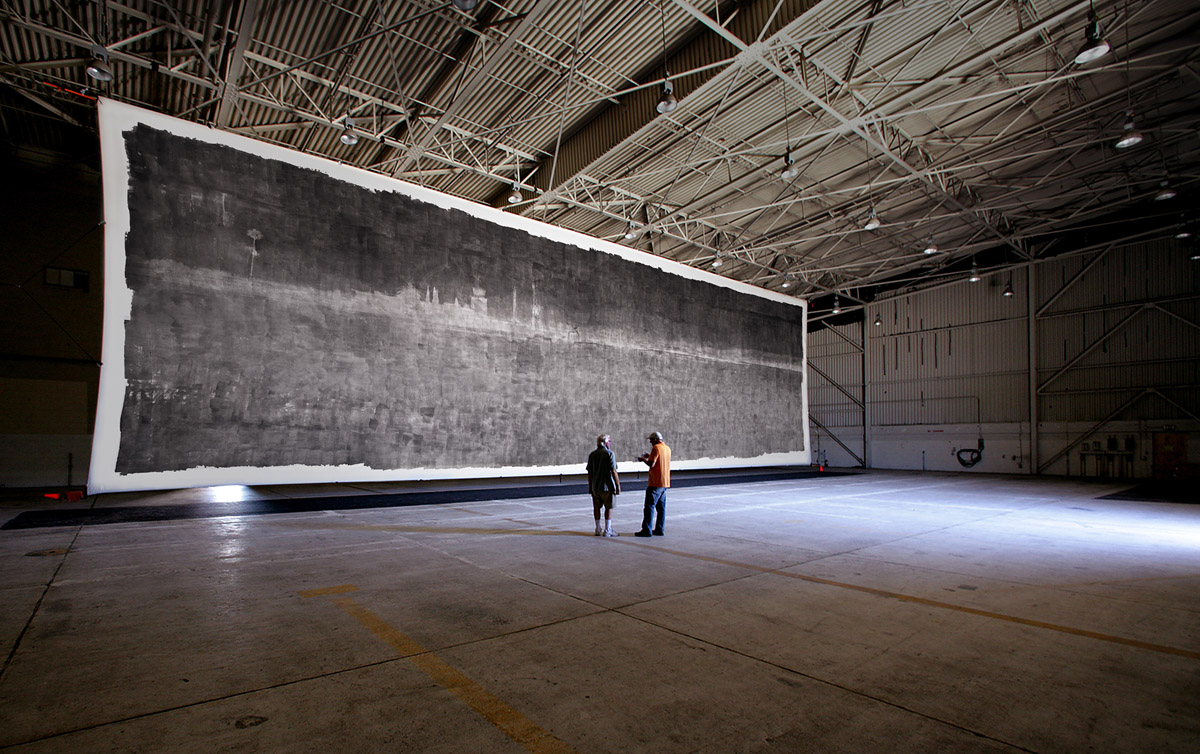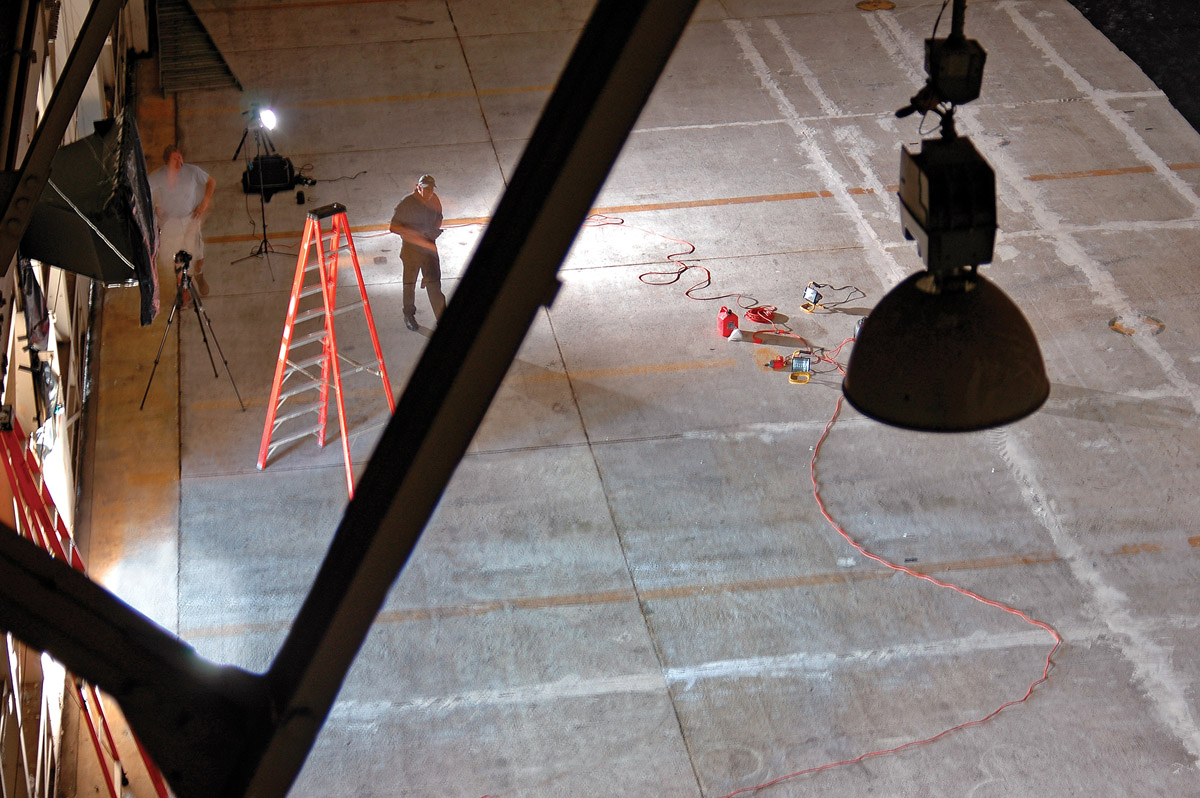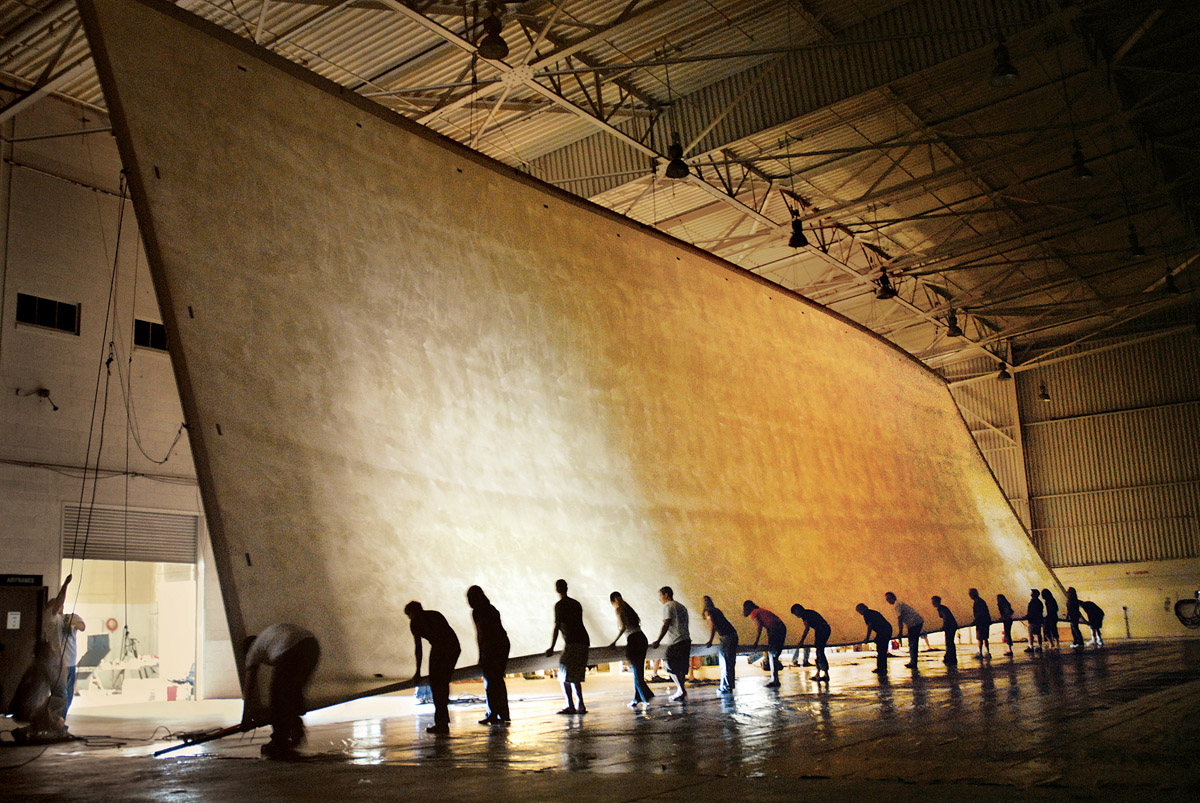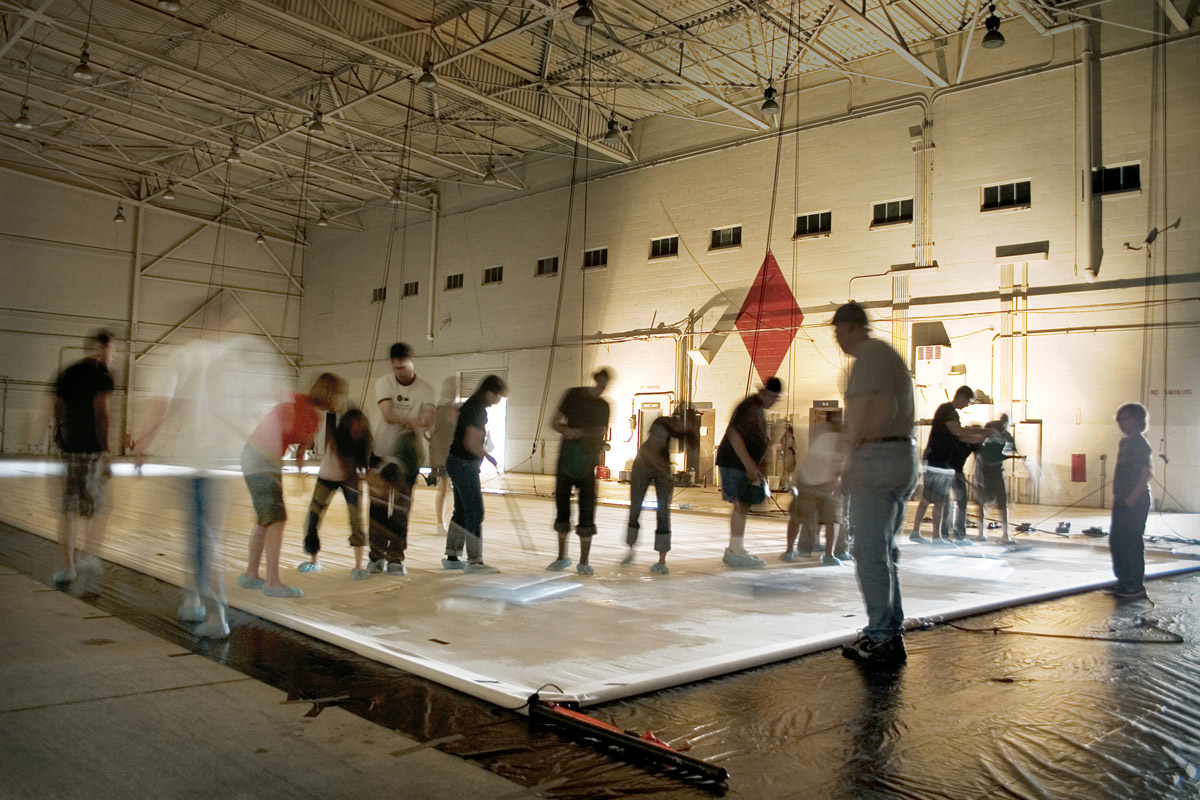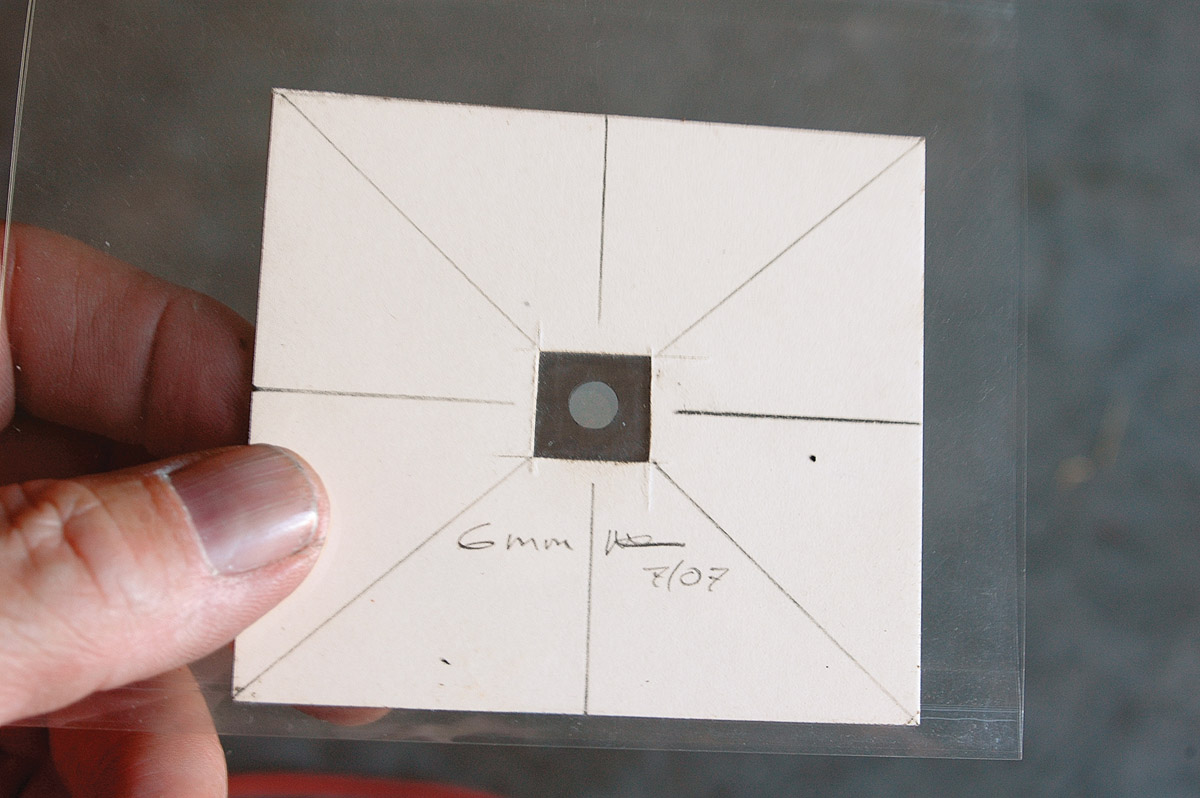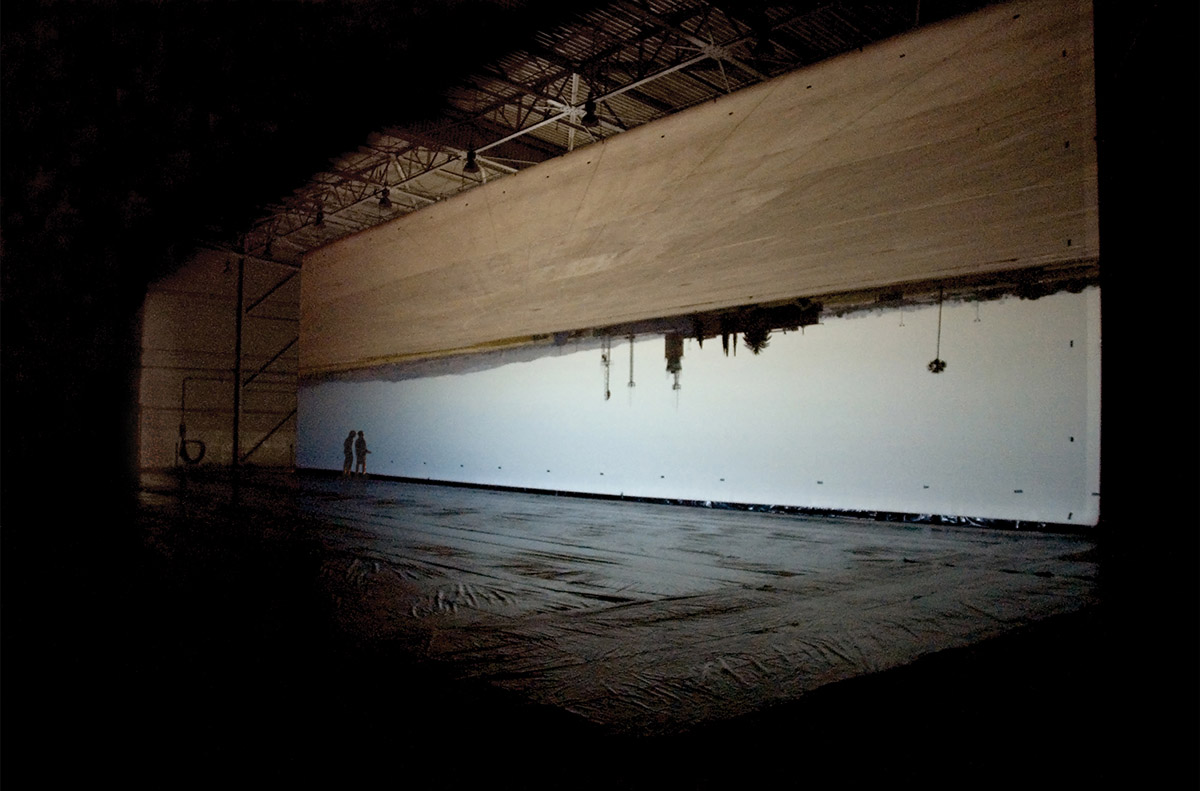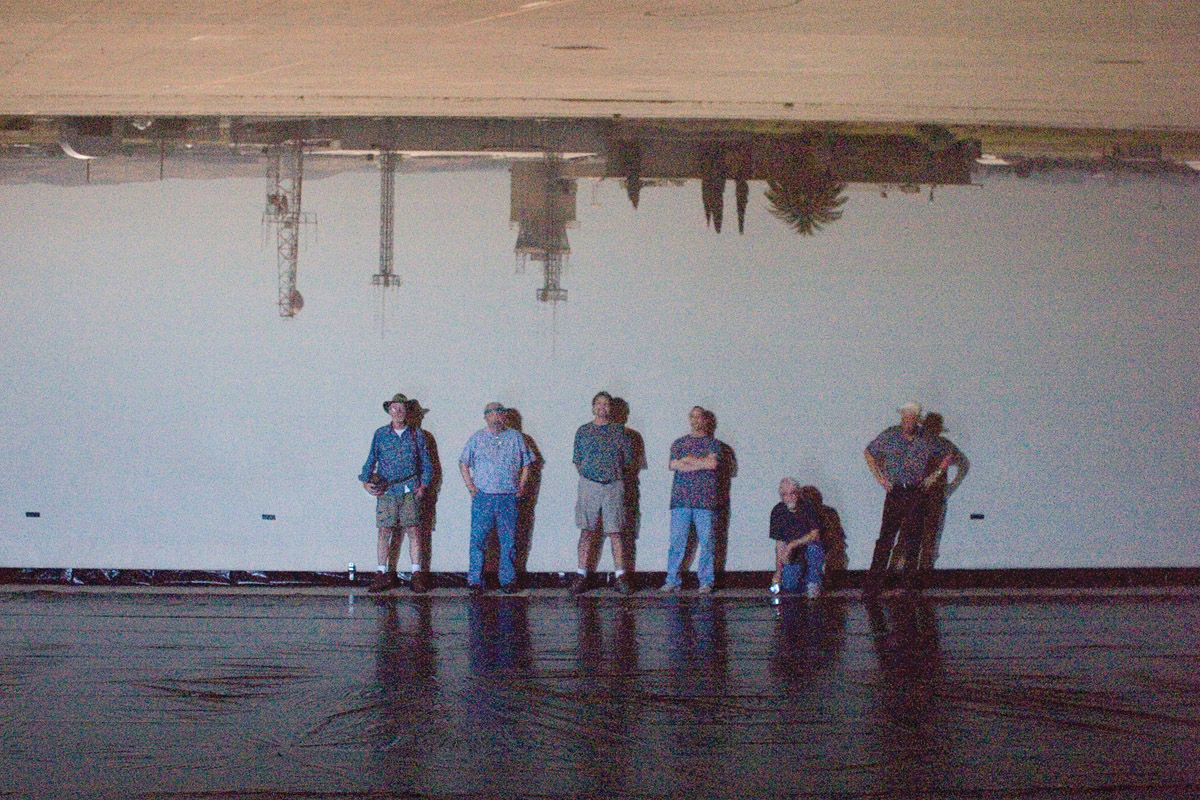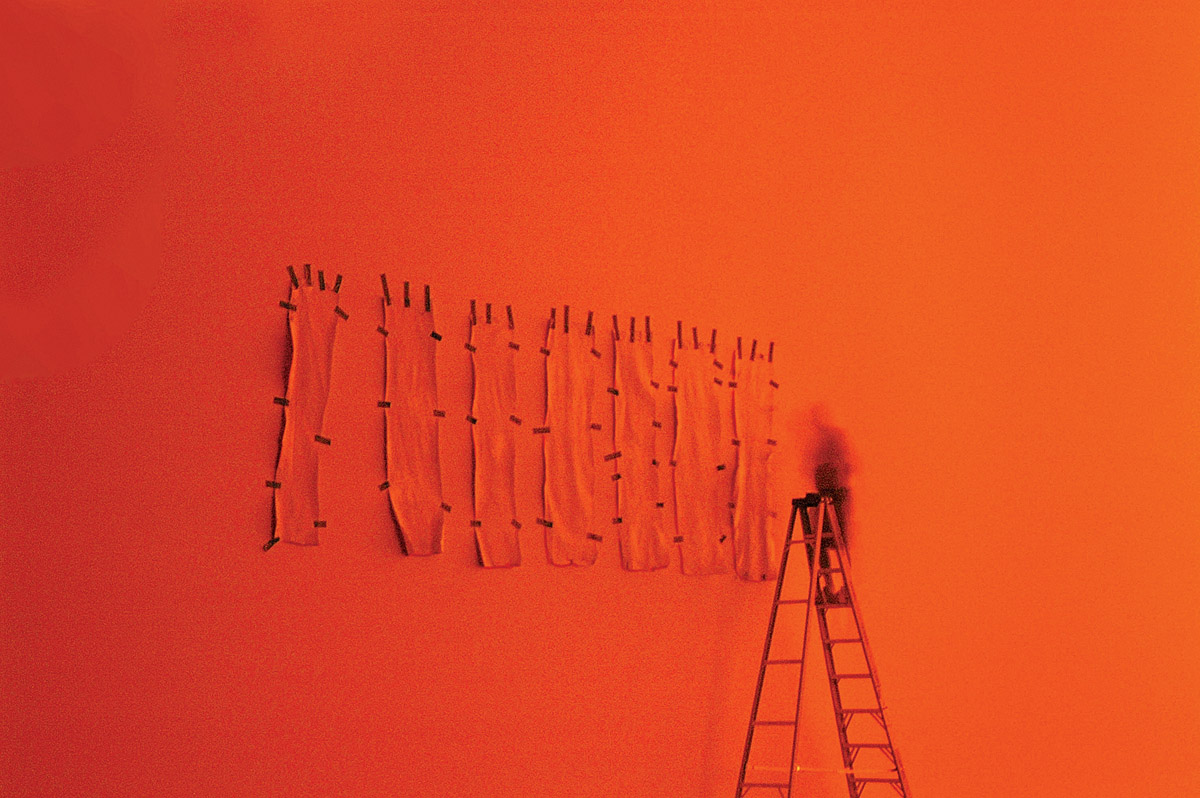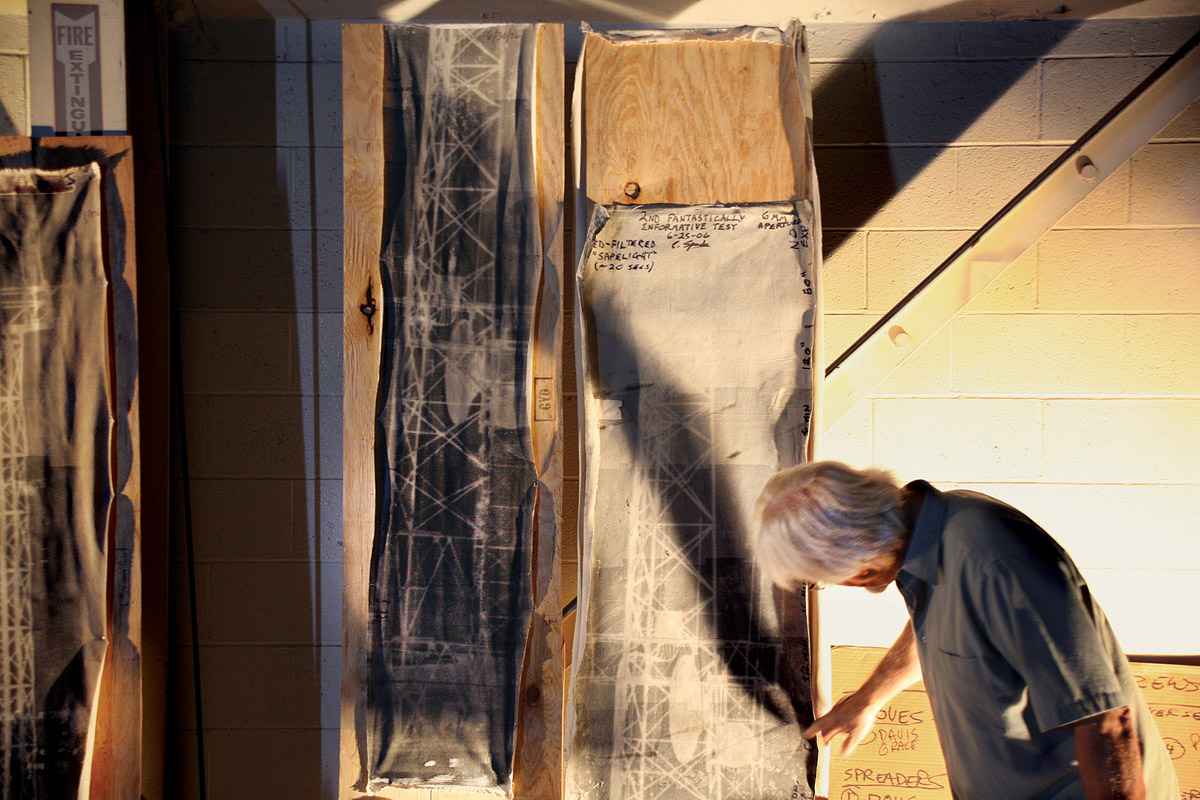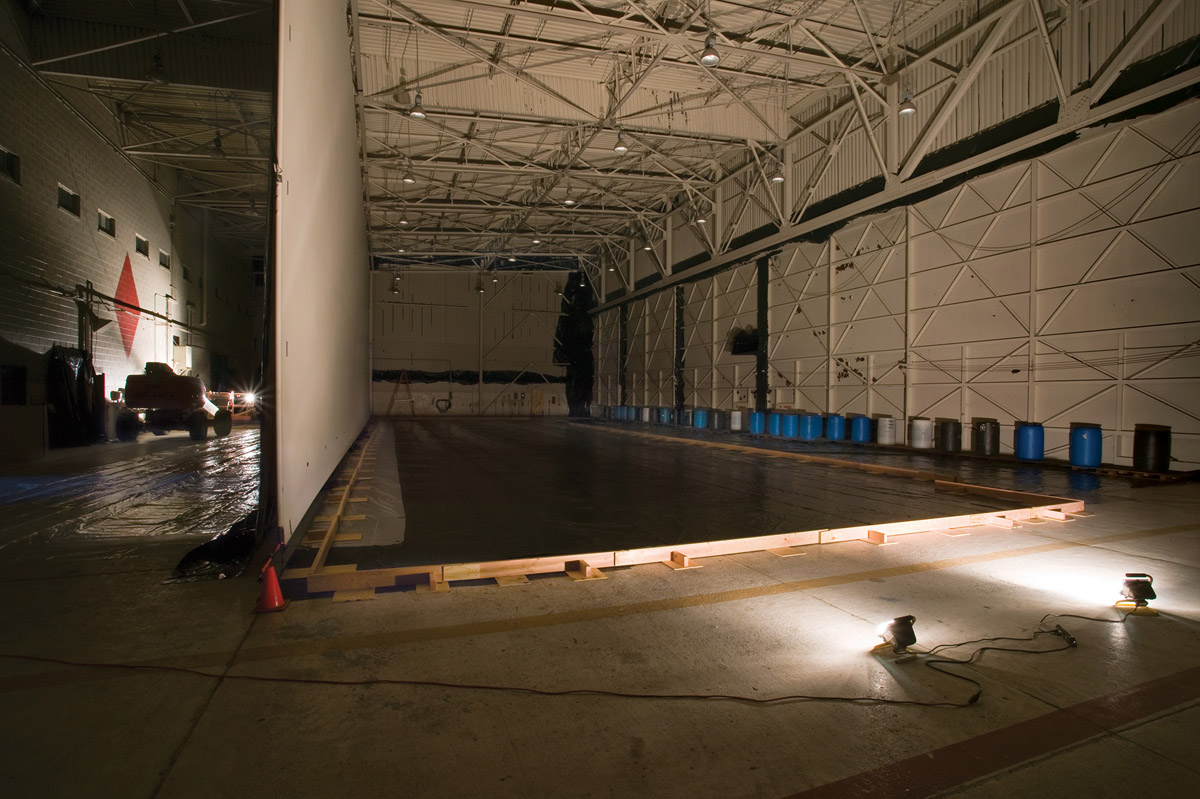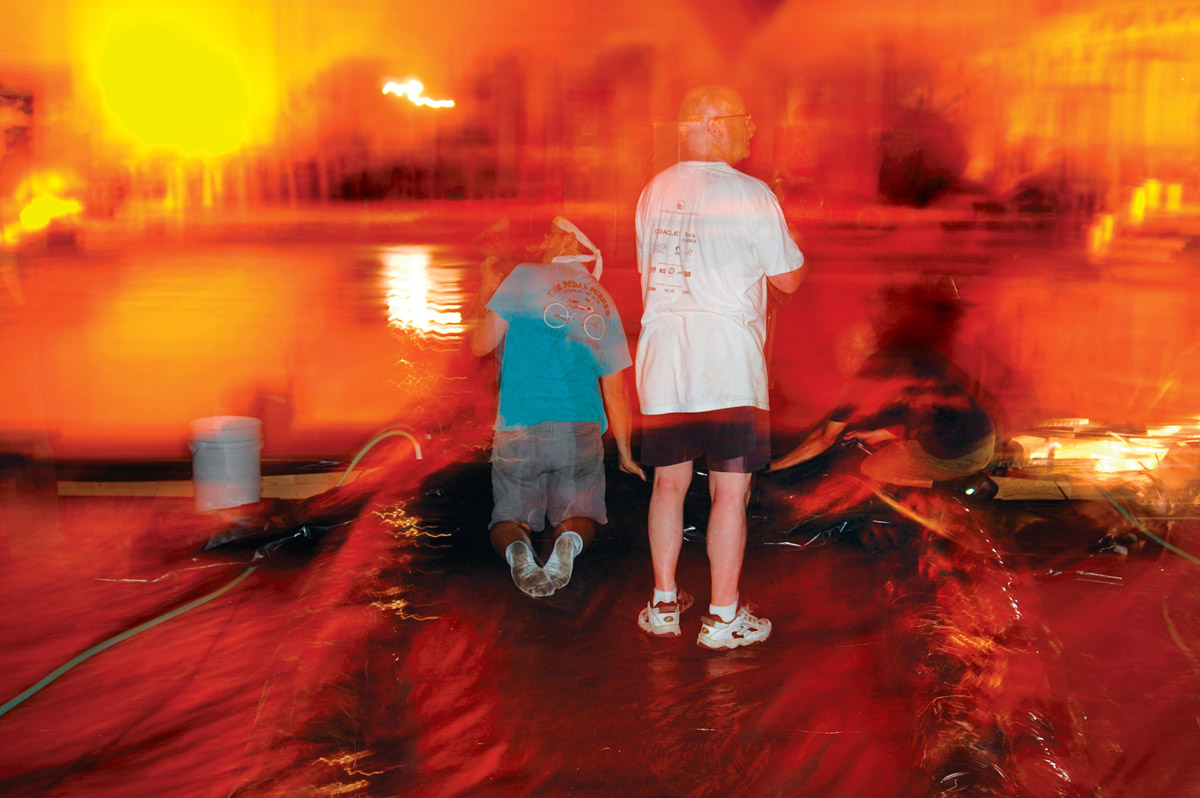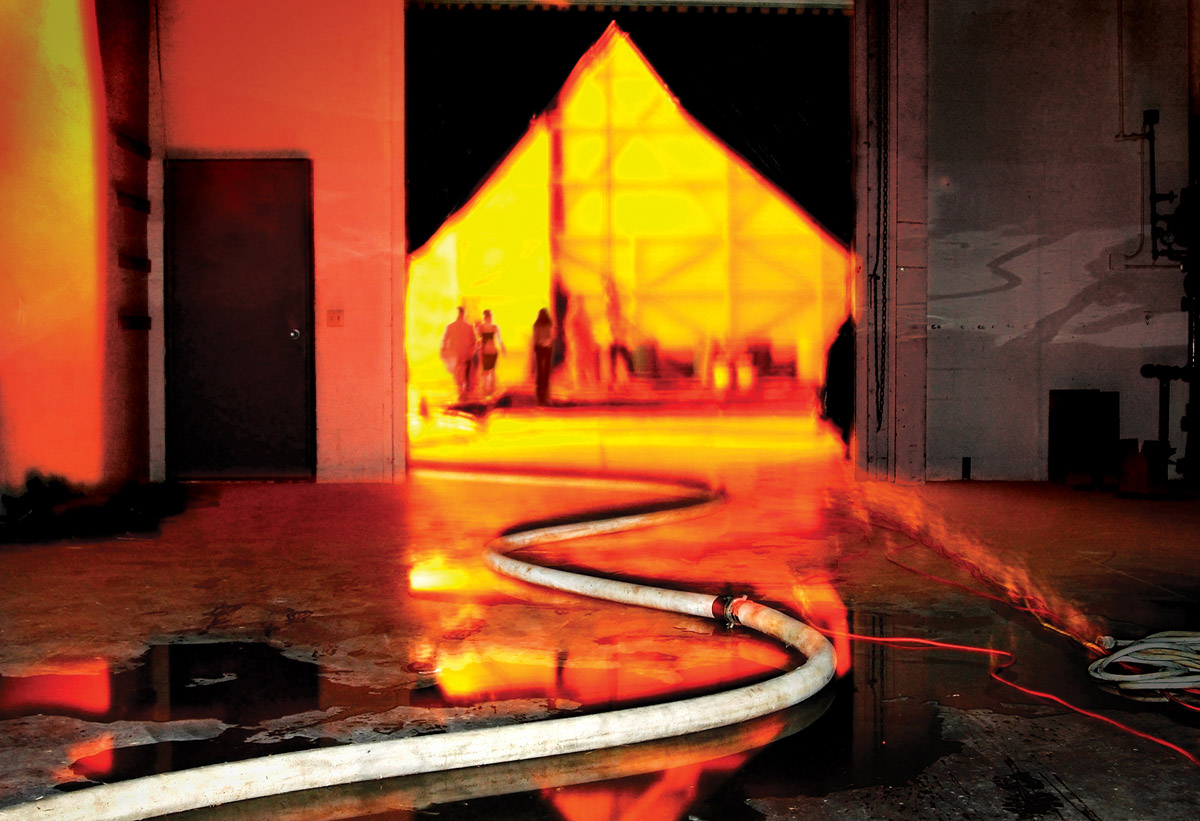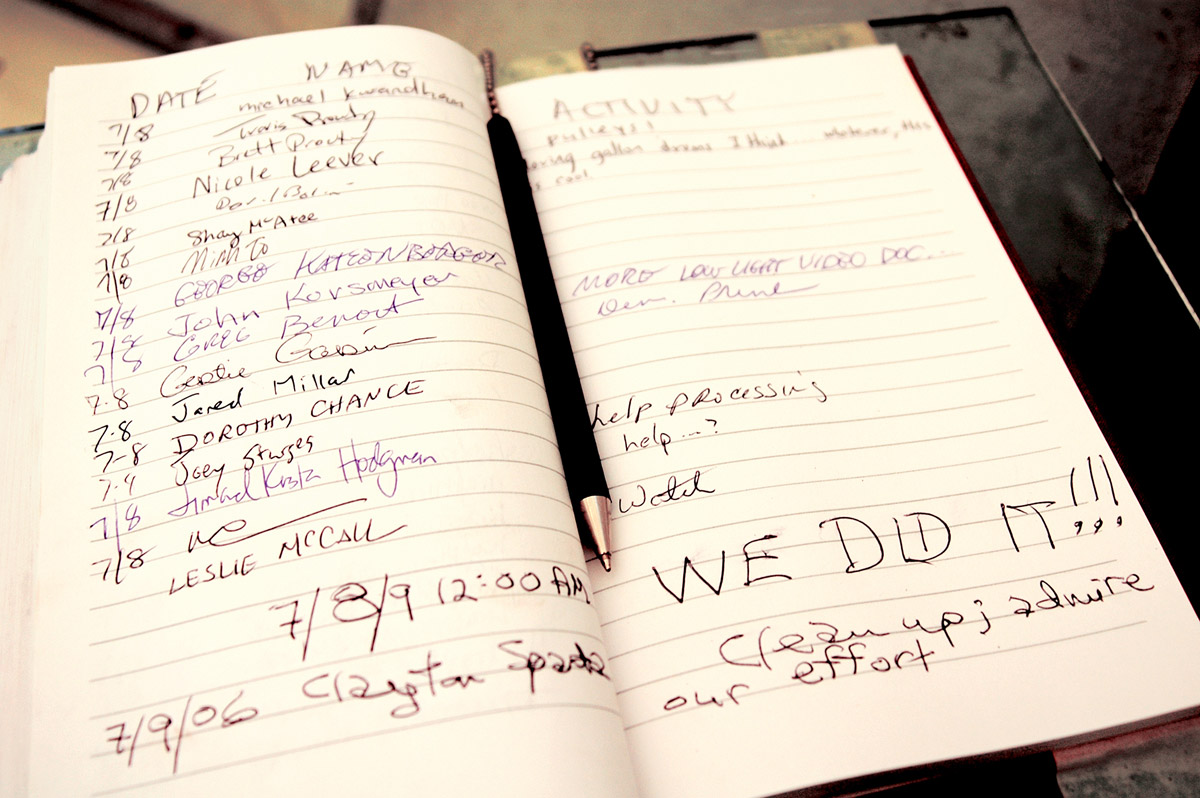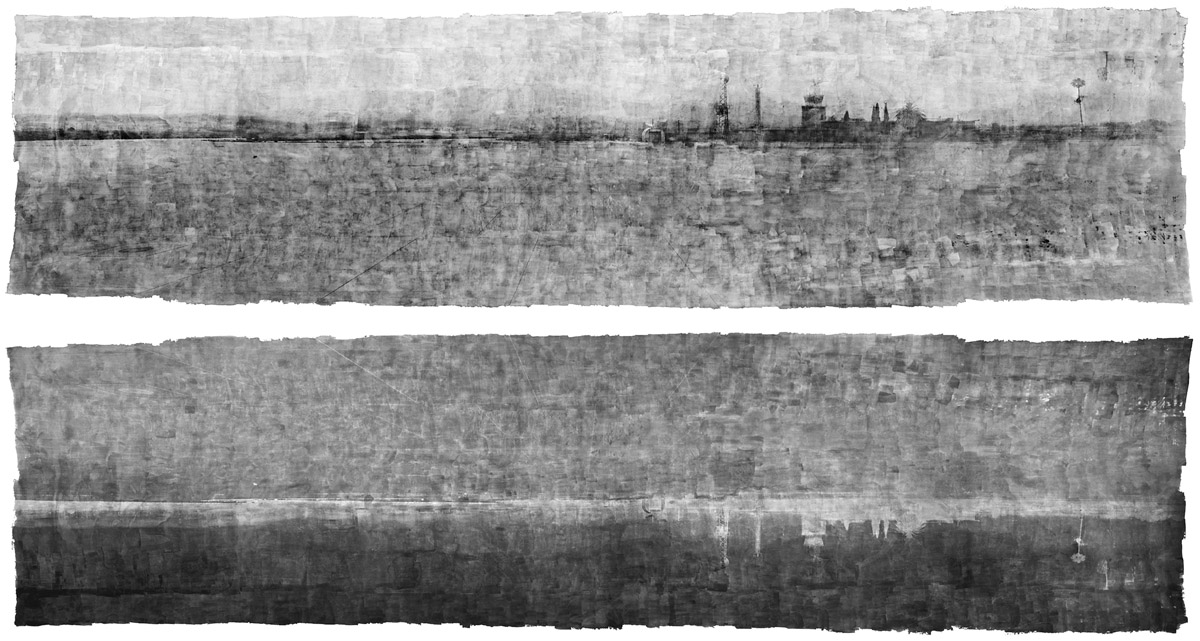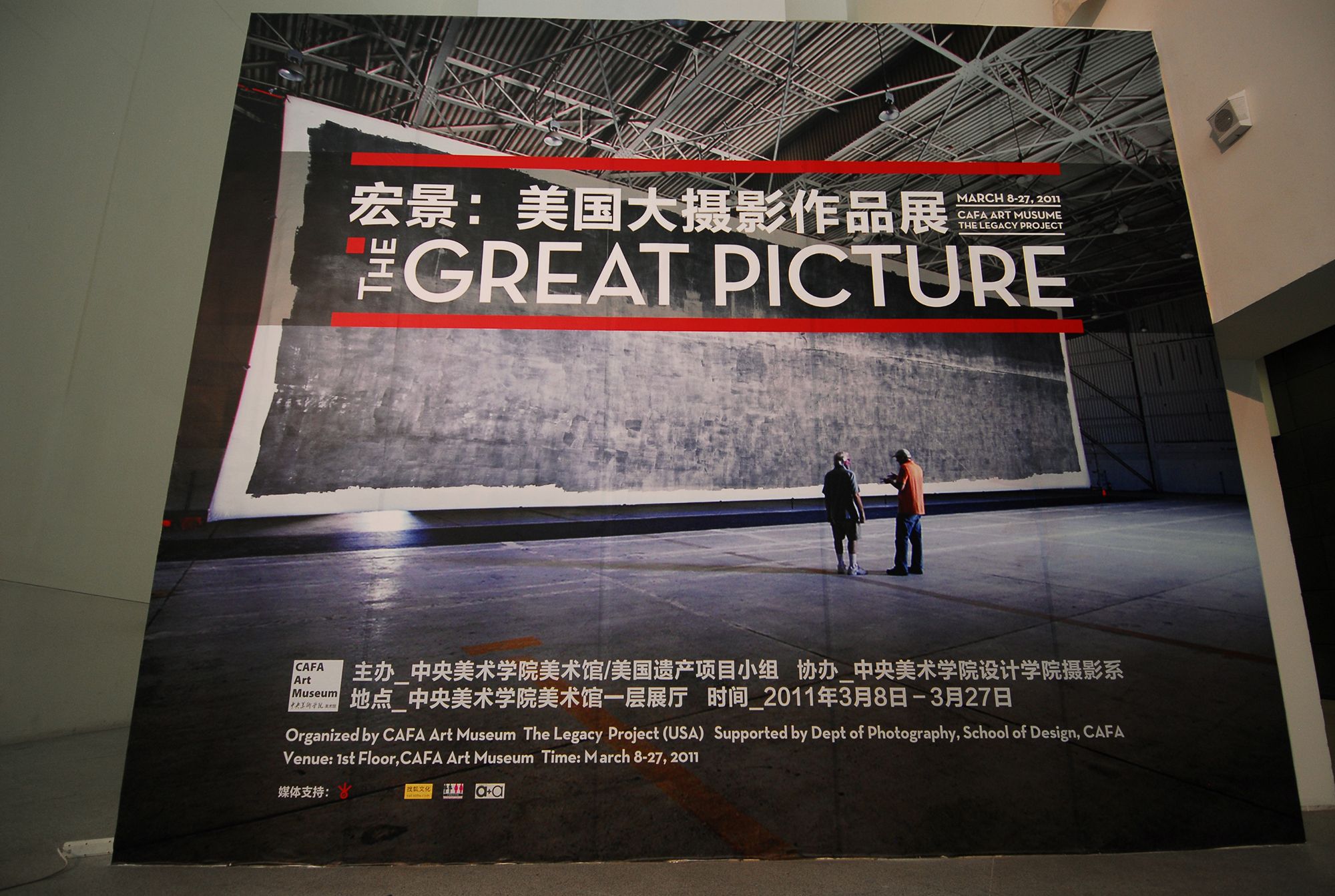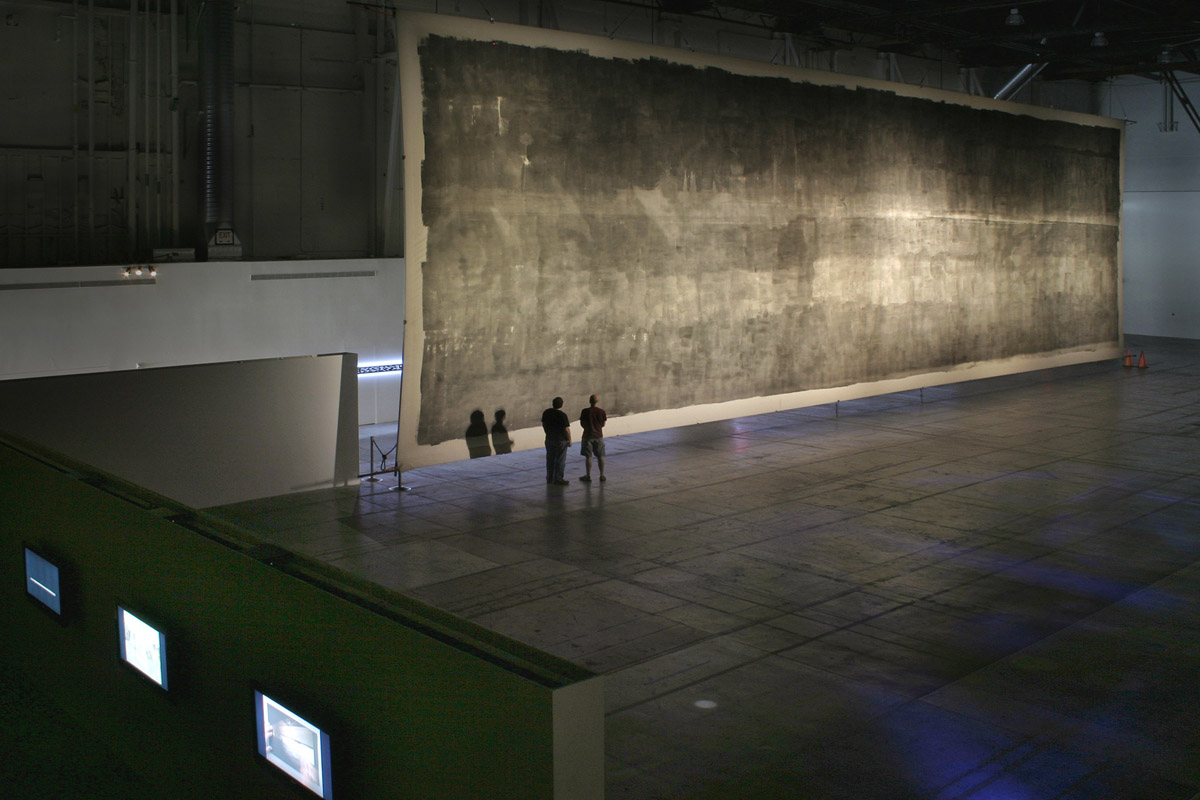The Great Picture
Photo Description
The Great Picture
The Great Picture is the largest photograph ever made. It's a unique gelatin silver photographic image more than 31 feet high by 107 feet wide [9.58 x 32.74 meters]. It's a remarkable art object with photo history meaning and import that reaches far beyond mere size. The photograph was made by transforming a closed military jet hangar in southern California into a gigantic camera obscura-the world's largest camera. The Great Picture's significance has been recognized worldwide in exhibitions, extensive press coverage, and a major book from fine art publishing house Hudson Hills Press, New York.
The Legacy Project Collaborative
The Great Picture was produced by the Legacy Project Collaborative—six artists, 150,000 photographs, 35 exhibitions, and the world's largest photograph. The collaborative is in its second decade generating art, documents, books, and exhibitions.
The Legacy Project Collaborative is Jerry Burchfield, Mark Chamberlain, Jacques Garnier, Rob Johnson, Douglas McCulloh, and Clayton Spada. The six artists began working in 2002 at a giant, closed military base in southern California—the 4,800-acre Marine Corps Air Station El Toro. Granted extraordinary access to the sprawling base, the six artists have shaped a project of rare scope and significance. Projects include transforming a military jet hangar into the largest camera ever made to produce the world's largest photograph. To date, the group has made some 150,000 images, an art-historical document on a scale seldom seen. Work from the collaborative project has been shown in more than 35 national and international exhibitions.
A Site-Specific Project
The project focuses on the shuttered 4,800-acre Marine Corps Air Station El Toro in Southern California. The vast military base was decommissioned by the U.S. Department of Defense in July, 1999. Once home to United States Marine Corps air operations for the western United States and Pacific region (including Japan, Korea, Vietnam, and the Middle East), El Toro is now being transformed into housing and the largest urban park in the western United States. In 2002, the Legacy Project was granted unprecedented, carte blanche access to the base.
Making the Great Picture
In the spring and summer of 2006, six photographers—the Legacy Project Collaborative—and hundreds of volunteers, artists, and experts spent thousands of hours transforming a Southern California military jet hanger into a gigantic camera. The aim was to make a single black and white photograph—by far the largest ever produced.
Working in a military jet-hangar-as-camera, the group hand-applied 80 liters of gelatin silver halide emulsion to a seamless 3,375-square-foot canvas substrate custom-made in Germany for the project. Development required a custom Olympic pool-sized developing tray, ten high-volume submersible pumps, and 1,800 gallons of black and white chemistry. The Great Picture was completed in July 2006.
"Photography is a kind of overstatement," wrote Susan Sontag, "a heroic copulation with the material world." In this case, the copulation was arguably more heroic—and certainly more prolonged—than most.
The world record photograph—32 feet by 111 feet—in place in the shuttered F-18 jet hanger transformed into the world's largest camera to make the image.
The entirety of Building #115 at the abandoned El Toro Marine Corps Air Station in Southern California was transformed into a massive camera.
The effort to make the building into a light tight camera required hundreds of volunteers and thousands of hours.
Twenty-five people test-raised the photograph's canvas base -- unsensitized -- into place inside the camera; total weight: 1,200 pounds.
The canvas was sized with 60 gallons of scientific-grade gelatin.
After extensive calculations, conjecture, and testing, a camera obscura aperture of 6mm was selected, the final aperture milled from extremely thin titanium sheet.
For a time, the building was a tremendous light sculpture. After twenty minutes of becoming accustomed to the extremely low light, the image glowed luminously on the huge suspended fabric.
Six photographers masterminded the art undertaking. From left to right in this 20 minute exposure: Mark Chamberlain, Rob Johnson, Jacques Garnier, Clayton Spada, Jerry Burchfield, and Douglas McCulloh.
The first row of test strips being hung on the canvas surface from the precarious top of an 18-foot ladder.
The group was operating at a scale never before achieved, so huge test strips became the only way to determine exposure.
A huge developing tray was constructed using a custom piece of vinyl pool liner -- the scale of an Olympic swimming pool but just six inches deep.
Ninety volunteers turned out to develop the great photo, using eleven high volume pumps and 55-gallon drums of chemistry. Elaborate charts orchestrated the effort. Developing the photograph used 600 gallons of developer and 1,200 gallons of fixer.
Two high volume fire hydrants were used to wash the photograph.
A celebratory note is penned in the sign-in book that, in keeping with Guinness Book record requirements, had been posted for months at the hanger entrance.
The photograph is a remarkable object. The hand-applied emulsion and camera obscura approach reach back to the beginning of photography, marking a complete circle as film-based images are replaced by pixels.
The Great Picture has been the centerpiece of a score of major exhibitions, including: The Smithsonian Institution, Washington D.C.; Central Academy of Fine Arts, Beijing, China; and Art Center College of Design, Los Angeles; New Orleans Contemporary Arts Center; Great Park Gallery, Irvine, California; and University of California/Culver Center of the Arts and Sweeney Gallery.
Meaning, Import, and Place in Photo History
The Great Picture is the final punctuation mark at the end of 170 years of film/chemistry-based photography and the start of digital dominance.
“It’s a negative from the very beginning of photography and a digital positive. It’s the bracket. On one side, the infancy of photography and on the other, the technological revolution.” —Carol McCusker, Museum of Photographic Arts, San Diego
“The Great Picture is one of those crazy ideas that occur to artists—an immense, black and gray, somewhat blurry image, evidence first and foremost of risks taken and overcome…. a threshold between memory and a new photographic vision.” —Lucy R. Lippard, art critic
“The Great Picture is the world’s largest photograph produced by the world’s largest camera. It is also the world’s largest statement, literally and metaphorically, about the role that photography plays in our society.” —Tyler Stallings, Curator, University of California
The camera obscura technology and the hand-applied photosensitive emulsion connect The Great Picture to photography’s origins. But within minutes of completion, extensive press coverage transmitted digital versions of the image across the world, and the image was immediately transformed via Photoshop from analog negative to digital positive. Photohistorians, taking note of the monumental scale of the undertaking and dual analog/digital nature of the image, position The Great Picture’s as a monumental marker of the moment when photography moved out of film and into pixels.
Photo
